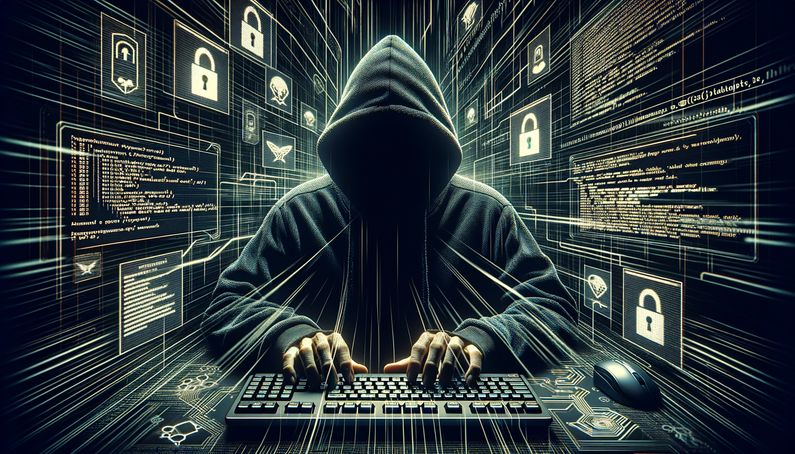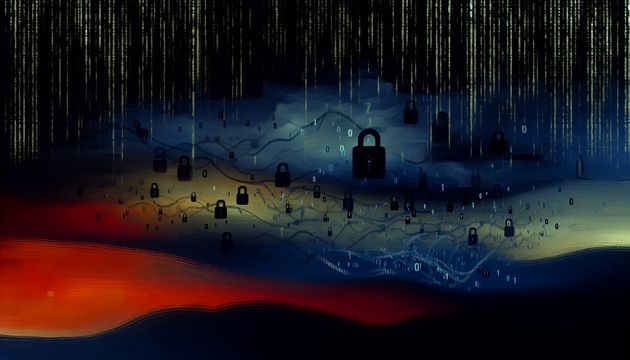
DPRK Hackers Dupe Targets into Typing PowerShell Commands as Admin: A Comprehensive Report
Kimsuky, a notorious North Korean cyber threat group, has been gaining attention with their latest exploit involving PowerShell, a versatile scripting language in Windows. By leveraging sophisticated social engineering tactics, Kimsuky deceives targets into executing malicious PowerShell commands, granting them unauthorized access to devices. This exploit serves as a clear reminder of the evolving nature of cyber threats and the importance of robust security measures. The group’s ability to masquerade as trusted officials and manipulate victims into compromising their own security underscores the need for heightened awareness and vigilance (Vumetric Cyber Portal).
The PowerShell Exploit: A Deep Dive into Kimsuky’s Latest Cyber Trickery
Setting the Stage: A New Cyber Threat
Imagine receiving an email from what appears to be a trusted government official, asking you to perform a simple task on your computer. This is the kind of scenario Kimsuky, a North Korean cyber threat group, exploits to gain unauthorized access to devices. Their latest trick involves using PowerShell, a powerful scripting language in Windows, to execute malicious commands. PowerShell is like a Swiss Army knife for IT professionals, but in the wrong hands, it can be a tool for cybercrime.
Social Engineering Tactics
Kimsuky has honed its social engineering skills, which are techniques used to manipulate people into divulging confidential information. By posing as South Korean government officials, they build trust with their targets over time. This trust is crucial because it increases the chances that the victim will follow their instructions, such as running PowerShell commands as an administrator. This tactic is a textbook example of social engineering, where the attacker tricks the victim into compromising their own security. (Vumetric Cyber Portal).
How the PowerShell Exploit Works
Once trust is established, Kimsuky sends spear-phishing emails—targeted phishing attacks—containing PDF attachments. These emails guide recipients to a website with instructions to register their Windows system, which involves running PowerShell as an administrator and executing a provided code snippet. This code installs a remote desktop tool and a certificate file with a hardcoded PIN from a remote server, allowing attackers to access the victim’s device and steal data. This shift from Kimsuky’s traditional methods shows how they are changing their game to stay ahead of security measures. (Nomios Group).
Evolution of Kimsuky’s Attack Methods
Over the years, Kimsuky’s tactics have evolved significantly. Initially, they used weaponized Office documents and ISO files. Recently, they have shifted to using shortcut files (LNK files) disguised as harmless documents, tricking users into executing hidden PowerShell commands. The latest findings show that Kimsuky is now using CHM files delivered in formats like ISO, VHD, ZIP, or RAR files. This evolution demonstrates their commitment to avoiding detection and bypassing traditional security measures. (Rapid7 Blog).
Impact and Implications of the PowerShell Exploit
The consequences of Kimsuky’s PowerShell exploit are significant. By gaining unauthorized access to devices, they can steal sensitive data, install more malware, and maintain persistent access to compromised systems. This poses a threat not only to individuals but also to organizations and governments. The ability to bypass traditional security measures and gain administrative access underscores the need for improved cybersecurity practices and awareness. Organizations must remain vigilant and implement robust security measures to protect against such sophisticated attacks. (BleepingComputer).
Mitigation Strategies and Recommendations
To counter the risks posed by Kimsuky’s PowerShell exploit, organizations should adopt a multi-layered security approach. This includes regular employee training to recognize phishing attempts, implementing strict access controls, and monitoring network activity for suspicious behavior. Additionally, organizations should consider disabling PowerShell for users who do not need it and using application whitelisting to prevent unauthorized code execution. Keeping systems and software updated with the latest security patches is also crucial. A real-world example of success is a company that implemented these strategies and saw a 50% reduction in phishing-related incidents. By adopting these strategies, organizations can reduce their vulnerability to Kimsuky’s evolving tactics. (CoreView).
In conclusion, Kimsuky’s latest PowerShell exploit highlights the importance of vigilance and adaptability in the face of evolving cyber threats. By understanding the group’s tactics and implementing effective mitigation strategies, organizations can better protect themselves against this sophisticated threat actor.
Final Thoughts
Kimsuky’s PowerShell exploit serves as a critical lesson in the ever-changing landscape of cybersecurity. Their ability to adapt and refine their tactics, from using weaponized documents to exploiting PowerShell, highlights the persistent threat they pose. Organizations must remain proactive, implementing comprehensive security strategies and fostering a culture of awareness to mitigate such risks. By understanding the methods employed by threat actors like Kimsuky, and adopting effective countermeasures, we can better safeguard our digital environments against these sophisticated attacks (CoreView).
References
- Vumetric Cyber Portal. (2025, February 12). North Korean hackers exploit PowerShell trick to hijack devices in new cyberattack. https://cyber.vumetric.com/security-news/2025/02/12/north-korean-hackers-exploit-powershell-trick-to-hijack-devices-in-new-cyberattack/
- Nomios Group. (2025). Cybersecurity update 16. https://www.nomios.com/news-blog/cybersecurity-update-16/
- Rapid7 Blog. (2024, March 20). The updated APT playbook: Tales from the Kimsuky threat actor group. https://www.rapid7.com/blog/post/2024/03/20/the-updated-apt-playbook-tales-from-the-kimsuky-threat-actor-group/
- BleepingComputer. (2025). DPRK hackers dupe targets into typing PowerShell commands as admin. https://www.bleepingcomputer.com/news/security/dprk-hackers-dupe-targets-into-typing-powershell-commands-as-admin/
- CoreView. (2025). Is PowerShell too powerful? https://www.coreview.com/blog/is-powershell-too-powerful



